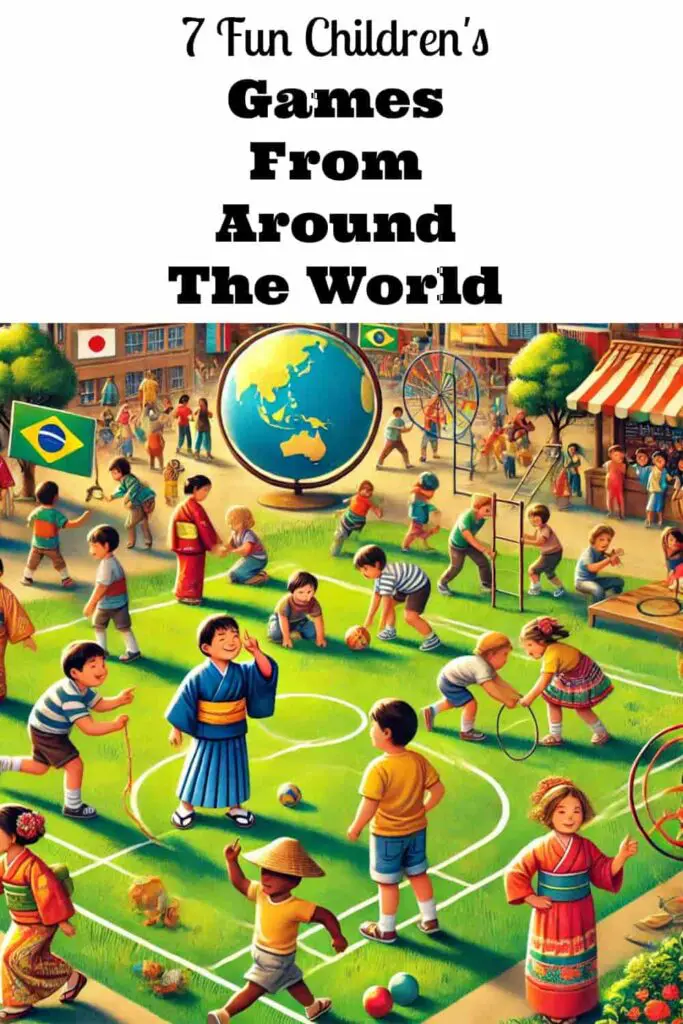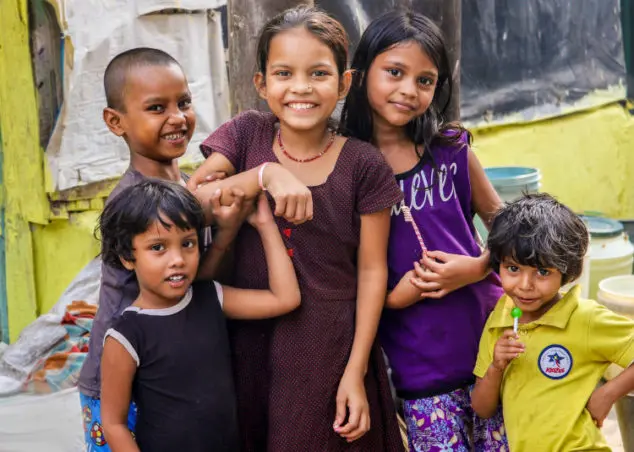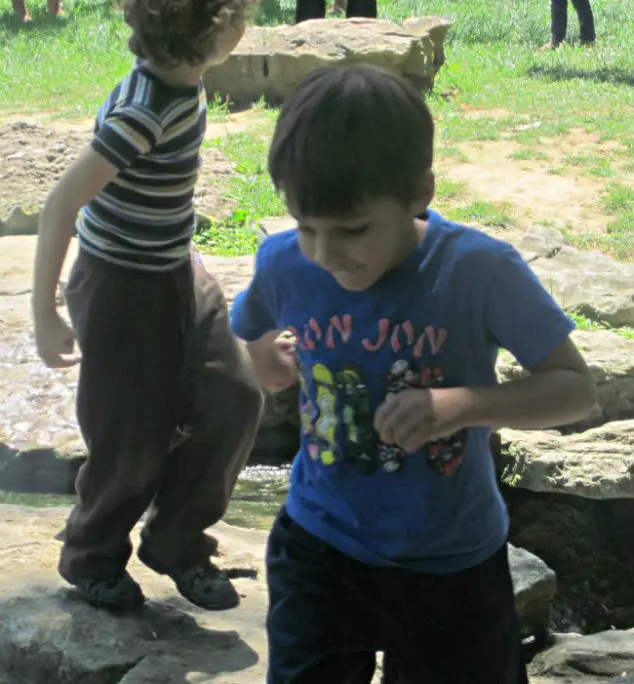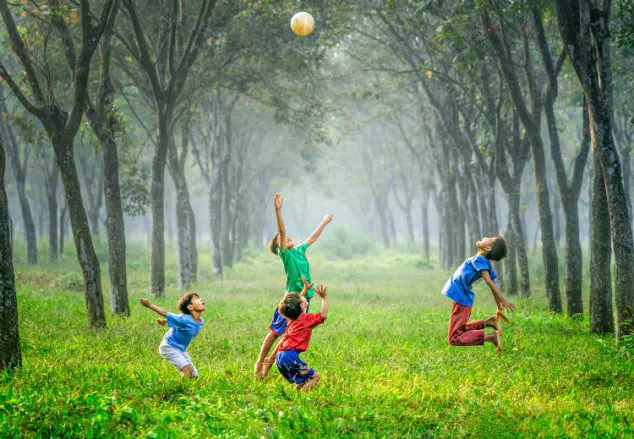Looking for some games around the world for preschool? Great idea! Games are a great way for people to interact and pass the time in a fun way. Since games encourage people to do things together they help build social skills and group games even teach responsibility as each person has to participate fully to keep it fun for everyone. Games are actually perfect for learning in fun ways. Here are 5 timeless games from around the world that your kids can play in your own backyard.

Timeless Games For Children Playing Around the World
Don’t forget to tell your kids where each kids games from around the world originated. It is a great way to get them interested in geography and culture. When I was little we played games like Red Rover, Simon Says, and Red Light Green Light. Today, I have Neve from WeTheParents.org to share with us kids games from around the world that she learned about during her days as a preschool teacher. We have 7 different countries represented in this list of traditional playground games from around the world.
In today’s global village, kids share one common language: technology. From Albania to Zambia, kids often know how to navigate an iPhone or have a Facebook account. They experience the same glee when texting that smiley poo emoji to each other. There is, however, a deeper universal language that has been shared by children for many thousands of years: playing games. Way before the first YouTube video went viral, it was kids’ games that were being spread around. Some, like skipping, arose independently in almost every continent. Whilst other games originated in a single country and were passed on by word of mouth from port to port, city to city, country to country. As they traveled, the games themselves morphed and evolved, adding cultural twists and changing names. The underlying principles of fun, however, remained the same, immediately accessible to any child on Earth.
While gadgets and gizmos come and go, some games are so astoundingly fun, they bring children the same joy today as they did hundreds of years ago. Here are five of these classics games from around the world (both ancient and new).
The Dragon’s Tail (China)
Dragons are important mythical creatures in Chinese culture. They symbolize auspicious power, strength and good luck. This energetic game quite literally connects all the players. It almost always ends with a pile of giggling kids on the floor.
Players: 5 or more (8+ ideally)
Ages: 4-years and up
How to play:
All children form a line by placing their hands on the shoulders of the child in front (ie, a conga train). This is the dragon. The child at the front is the dragon’s head and the one at the rear is the dragon’s tail. The head must now try to catch the tail. It gets challenging and fun because the body must stay connected. If the body breaks, then the chase stops and the dragon reforms. When the head catches the tail, the head is out and the tail becomes the new head. The game ends when there are only two children left.
Cheetahs and Cheetals Game (India)
Hundreds of years ago, Indian princesses used to train cheetahs to hunt cheetals (spotted dear). At least, that’s how the story goes. In this traditional children’s game, the cheetals have a chance to get their own back.
Players: 6 or more
Ages: 4-years and up
How To Play Cheetahs and Cheetals:
Three parallel lines are drawn on the ground with a gap of 20-30 feet between them. (You can use chalk, ropes or even leaves.) One child is the ‘caller’, the others form into two teams (cheetah vs cheetals). Both teams line-up back-to-back along the central line. The caller shouts out “cheeeeeeee…” and then “tals” or “tahs”. If “cheetahs” are called, then the cheetahs run to their home (the line they are facing). The cheetals spin around and pursue them. Any cheetahs caught, are out. The teams return to the central line and go again. The Cheetahs and Cheetals game ends when a whole team has been caught.
Scooter Bowls (United Kingdom)
In England, a favorite game of the over 65s is bowls. During this 800-year-old game, the players dress up in white, drink tea and roll a bowl (heavy black ball) about 100ft towards a jack (small white ball). The skill is to get your bowl as close to the jack as possible.
Scooter Bowls is a new craze among British children. It is played not with bowls and jacks but 2 or 3-wheel kids scooters. The aim is to stop as close to a target as possible. Scooter Bowls is a game that all the kids play at my daughter’s school.
Number of Players: 2 or more
Ages: 3-years and up
How to play:
Two parallel lines are drawn on the ground using chalk: the starting line and the target line. The distance between them is varied from round to round. Players decide on the number of “pushes” (typically between 1 and 5). This is how many times players can touch the floor with their feet. Players line up with their scooters behind the start line, then they take their turn one at a time. When a player pushes off, this counts as their first “push”. The objective is to get as close to the target line as possible without crossing it. Players can’t use their brake and if they go past the target line, they are out. The winner is the person who gets closest to the target line without using extra pushes.
Stop the Dancing Warriors (United States – Native Americans)
This classic game has many different variations around the world, for example, Musical Statues. I prefer this ancient version. It’s much more fun and doesn’t require parents or electricity. It is also a great way to learn rhythm.
Players: 4 or more (6+ ideally)
Ages: 4-years and up
How to play:
One child is the drummer. They bang a beat on the drum. It’s best if they start slow and keep the rhythm as steady as possible. All the other players dance to the beat. When the drummer stops, all dancers must freeze even if they are in an awkward position. Any dancer that moves, is out. The drummer gets progressively faster as the game goes on. This normally ends up with the dancing getting very silly and everyone roaring with laughter. The game ends when only one dancer left.
Shemot (Israel)
Shemot means “names”. This game is great for group bonding. It works nicely if people don’t know each other or when friends haven’t seen each other for a long time.
Players: 4 or more
Ages: 4-years and up
How to play:
Players begin in a circle. The ball is thrown up high and somebody’s name is called out. This person must run and catch the ball. Now it is their turn to quickly throw the ball high into the air and call somebody else’s name.
Daruma-san ga Koronda (Japan)
The popular kids game is named after the Daruma doll, symbolizing perseverance and good fortune, and its name translates to “The Daruma doll fell over.” In this fun game, players aim to approach the designated “it” player without being caught moving. It combines stealth, quick reflexes, and focus, making it both challenging and entertaining. It’s an active game that encourages strategic thinking and physical coordination while promoting a sense of community and tradition.
Players: 3 or more players
Ages: It is suitable for children aged 5 and up, though older players can enjoy it too.
How To Play:
One player is chosen as “it” and stands facing away from the others at a designated spot. The “it” player chants, “Daruma-san ga koronda!” while the other players move forward.At the end of the chant, the “it” player turns around quickly. If they catch anyone moving, that player is out or must return to the starting line. The game continues until a player successfully tags the “it” player without being caught or all players are eliminated. The player who tags “it” usually takes their place, starting the next round.
Queimada (Brazil)
Queimada is a popular children’s game in Brazil, resembling dodgeball but with unique twists. The name translates to “burned,” referring to players being “out” when hit by the ball. It’s a fast-paced and energetic game that fosters teamwork and agility. Queimada involves two teams aiming to eliminate the opposing players by hitting them with a ball or catching their throws. It’s a thrilling game that requires strategy and quick reflexes. Queimada is beloved for its balance of competition and inclusivity, making it a cherished pastime in Brazilian schoolyards and communities.
Players: 6 or more players, divided into two teams.
Ages: Ideal for children aged 7 and up, though younger players can join with simplified rules.
How To Play:
- Setup: Divide players into two teams and mark two halves of a play area, assigning each team one half. Designate a “prison” area behind each team’s zone for eliminated players.
- Start: Teams take turns throwing the ball to hit players on the opposing team.
- Elimination: A player is “burned” and sent to the opposing team’s prison if they are hit by the ball and fail to catch it.
- Prisoners’ Role: Eliminated players in the prison can rejoin the game by catching the ball thrown by their teammates during gameplay.
- Winning: The game ends when all players on one team are “burned,” or a time limit is reached, with the team having more players left declared the winner.
Conclusion
Children’s games from around the world reflect the diversity and creativity of human culture, offering a window into how communities pass down traditions, foster social bonds, and nurture essential life skills. Whether it’s Japan’s “Daruma-san ga Koronda,” India’s “Cheetahs and Cheetals,” or Brazil’s “Queimada,” these games showcase the universal language of play while celebrating regional uniqueness. By exploring and participating in games from different cultures, young children not only have fun but also develop empathy, adaptability, and a greater appreciation for the world’s rich heritage. This shared joy in play reminds us that, despite our differences, the spirit of childhood remains a powerful unifying force across the globe.
Whilst modern technology may feel like it’s taking over. The joy of active play and traditional games is deeply embedded in our human psyche. Given the opportunity (and perhaps a little nudge), today’s generation can have just as much fun with these play ideas as the kids who invented them, some several thousand of years ago. It is so good to witness kids playing around outdoors and trying new games that use involve both their minds and bodies. Which of these kids games from around the world do you think your child will enjoy the most?
Related Posts:




Adelina Priddis says
These children’s games all sound so fun! The Cheetah’s Cheetal’s sounds like a familiar game I played in elementary, though I’m sure we called out something different.
Stop the Dancing Warrior will be played at my house tonight! That sounds so fun, and way better than musical chairs.
Diana Lopes says
Cheetahs and cheetals seems really awesome and fun, I would even like to play myself (my inner child speaking). I’m sure the kids will love this!
Sara Watchorn says
Brilliant suggestions for generating geographical and cultural curiosity, cultivating social skills, and, of course, playing! You have triggered ideas for me to keep a group of children busy including incorporating crafts from around the world for children’s quests. Thank you!
Bachon Ki Web says
What a delightful and insightful post! I loved learning about these fun children’s games from around the world. It’s amazing how play can bring different cultures together while teaching kids valuable lessons in cooperation and creativity. The way you’ve highlighted the cultural significance of each game was both informative and engaging. Keep up the great work—this post is a wonderful reminder of how play transcends borders and unites us all.
Shoukat Ali says
I thoroughly enjoyed discovering these unique children’s games from different cultures. They seem like great outdoor activities.
colourmoon says
I love this article!
It’s so fun to learn about timeless kids’ games from different cultures. Such a great way to keep traditions alive. Thanks for sharing!
Hobby Dobby says
Such a delightful blog showcasing fun children’s games from around the world! At the Best Playschool in Bhubaneswar, we always look for creative ways to engage kids with unique activities. Introducing games from different cultures could be a wonderful addition to our playtime sessions. Thanks for the inspiration!
Ezhilarasi Bliss says
It’s fascinating to learn about children’s games from different cultures such a fun way to appreciate the diversity of play.